Ontologies are a central component of machine learning, but what exactly are ontologies and how do they work? In this article, we will demystify ontologies and explain how these data models make powerful discovery experiences in ecommerce possible.
What is an ontology?
An ontology represents knowledge in a graph of concepts that are connected to create meaning.
Let’s break this down further.
A concept is something that carries meaning. Usually, we can use a word or phrase to point to a concept. In the world of ecommerce, a concept could be the category of a product, like ‘laptop.’ There can be multiple words or phrases referring to the same concept. For example, ‘portable computer’ can mean the same thing as ‘laptop’— both refer to the same concept.
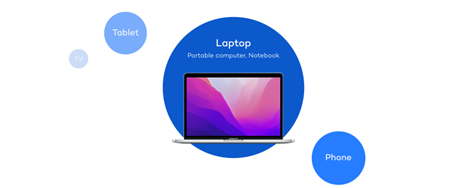
A graph is a collection of connected concepts. Each connection between concepts carries its own meaning, which is called a label. For example, the two concepts of ‘laptop’ and ‘computer’ are connected by the label ‘is a’ to create the new concept ‘laptop” is a computer.’ The concept ‘computer’ can also be connected to concepts like parts and features. For example, the concept of ‘computer’ can be connected to the concept of CPU or “Main memory’ with the label ‘has part.’ The connection of dozens, hundreds, or even thousands of concepts form a connected graph, otherwise known as an ontology.
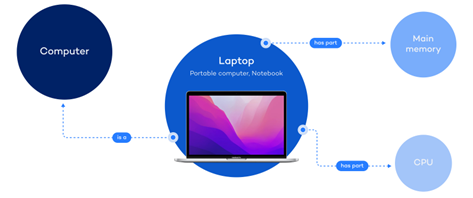
An ontology is like a blueprint for AI. You can’t buy the concept of a laptop, but you can buy a Microsoft Surface laptop, which is an instance of that concept. Once the information in an ontology is translated into instances, a knowledge graph is created. If an ontology is the blueprint, a knowledge graph is the finished house.
When product data is organized in a way that machines can read it, you can now reason over this graph to make inferences. For example, when we know that a computer has a graphics card, and a graphics card has a GPU, we can infer that the computer has a GPU. This is important because buyers might want to buy a graphics card by itself and filter GPU features. Or they might want to buy a computer that has a specific GPU for work requirements.
It also allows you to automatically understand what products are compatible. For instance, if both a cable and monitor share the same concepts and label of ‘connection type is HDMI’, we know the cable can be plugged into the monitor. Finding this information can take consumers a lot of time and effort if they have to manually read product detail pages and compare features, but an ontology equips ecommerce brands with a way to serve this information to shoppers not only quickly, but with extreme accuracy.
Zoovu’s ontology is made up of tens of thousands of ecommerce concepts. It’s like a well-trained salesperson that understands which features are important to which types of products. For example, it knows that the concept of weight is more important when buying a laptop than when buying a dress.
Zoovu comes with a relation manager that allows users to specify which products go together based on ontology rules. The great benefit is that you only set them up once. New products will automatically find their place in the knowledge graph and be shown as compatible if they match those rules.
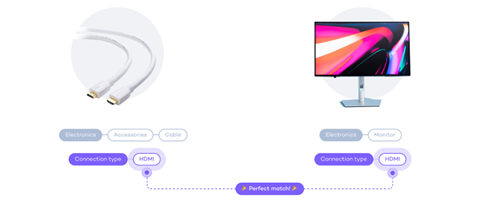
How is an ontology used in ecommerce
Now that we know what an ontology is, let’s look at why it’s so valuable for using product data to build ecommerce experiences, like search, product finders, configurators, bundlers, and more.
Ontological semantic search
Concepts, like laptop, can be referred to by synonyms, like notebook or portable computer. Ecommerce sites might use a single specific term for product categories, but the customer might use a different term. If there is no connection between the different terms, the customer searching for a ‘laptop’ in a store that calls their products ‘notebooks’ will have a hard time finding what they’re looking for.
It’s not only synonyms that the ontology can help the searcher with. If a user searches for a new pair of boots, they’ll certainly want to see all sub-categories such as ‘ankle boots’, ‘hiking boots’, and those that use terms other than boots, like ‘Wellingtons’ and ‘mukluks.’ Thanks to the ontology, those concepts are linked and the customer will get a wide variety of results to choose from.
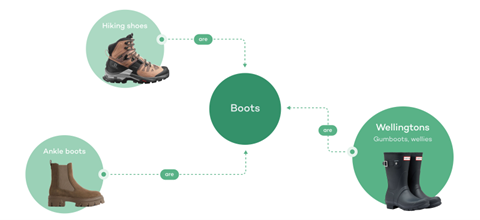
Ontology-enhanced guided selling assistant
When a user is early in the discovery process, they might not know what to search for. You might want to buy a backpack for hiking, but don’t know what properties the backpack should have. In this scenario, a guided selling solution can guide customers through a question flow to understand how they’ll be using the backpack (ie. daily use or hiking) and what is important to them. If the shopper selects hiking, the next question could be whether the material should be waterproof or how long their hikes are. These are needs-based questions. The customer might not know whether they needs a backpack with a 20L or 40L capacity. but the assistant understands the user’s needs based on their answers and maps it to specific product attributes. For example, if the shopper says their hikes usually last more than a single day, the ontology will determine that long hikes equal a larger capacity and recommend a 40L capacity bag. This mapping only works because of clean, normalized data governed by an ontology.
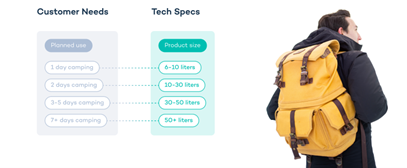
Ontology-powered configuration
An ontology can also help with relations between products, which comes in handy when creating product configurators and bundlers. These experiences allow customers to build complex configurations, such as a full set of appliances for a kitchen, all of which are compatible. For example, a customer might want their fridge to communicate with their oven. This requires both appliances to be smart home enabled, and preferably the same color. By setting up rules on ontological concepts (ie. ‘color’ must be the same and ‘smart home’ must be checked), the customer doesn’t have to worry. They can click on the fridge they like and the compatible ovens are automatically displayed.
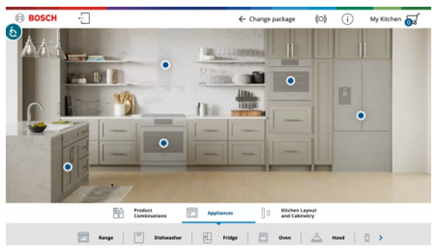
Summary
In this brief article we have learned that an ontology is a knowledge representation, which helps artificial intelligence better understand concepts of the real world, whether notebooks, shoes, backpacks, or home appliances. Furthermore, we have seen that with the help of this added layer of understanding, a host of applications, such as semantic search, guided selling, and smart configurators, can be built with ease.

